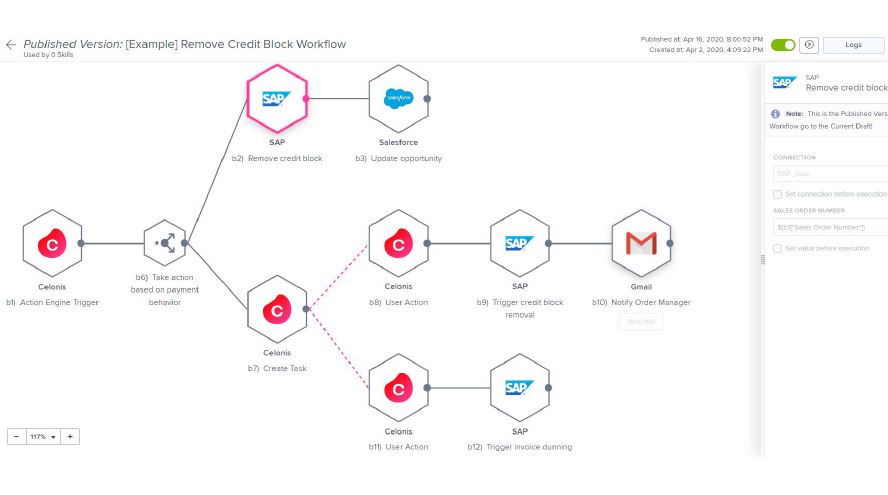As a partner of Celonis we attended Celosphere 2020, the biggest process mining event of the year. Within this 3-day event we acquired a tremendous amount of new ideas and obtained the latest insights. Eager to know the highlights? Here we have brought together a selection of various customer stories and new functionalities:
The learnings of Celosphere LIVE 2020
1. The new product reveal of the Operational Application for Accounts Payable that intelligently optimizes Accounts Payable processes for outcomes.
Before deployment of Celonis, payments might only be only paid on time in 34% of the cases, with 0,1% being paid twice and 17% without human intervention. To help customers with this, Celonis has built an operational application that optimizes the accounts payable process on 3 levels: Executives, Managers, and Clerks.
By doing so, the Celonis Action Engine and Transformation Center work together to
automatically find what is blocking your outcome;
give prescriptive guidance and automate actions;
prioritize work based on outcomes.
By using this new Operational Application for Accounts Payable, Fresenius Kabi (Global Healthcare Company, Revenue 2019 €35.524 billion) realized a cash discount rate of 90%, 15% higher on-time processing and 500K capital cost reduction through payment term optimization.
2. New Multi-System data model and Real-time data feeds
Celonis provided insightful actions to continuously enhance by providing out-of-the-box solutions. However, extracting and transforming source system data into event logs is hard and time-consuming. This becomes even more clear when processes span multiple source systems.
Therefore, to support easy extraction of data, Celonis has 36+ out-of-the-box connections (Teradata, SQL-server, SAP, AWS, SAP, Oracle, etc.). To transform this raw data, Celonis has 80+ pre-built transformation packages available in the Celonis App Store.


Real-time data feeds within 1 minute are now possible for SAP and Salesforce. Moreover, data models of various source systems (belonging to the same end-to-end process) can be linked in a multi-system data model

All in all, these new opportunities make sure the (scalable) Celonis infrastructure facilitates continuous data loads in the best way, with real-time providing loads of new use cases!
3. On top of the new Multi-System data model it is now also possible to link processes together with the new Multi-Event Log. As your company is not run by one, but many interconnected processes, this feature enables you to:
- Visualize parallel and interconnected processes;
- Spot friction in a process caused by another process;
- Perform cross-process drill-downs;
- Dynamically change perspective.
The analyst can easily configure from which prospective he wants to see the analysis, and can set-up KPI’s across multiple processes. Or even design a dashboard for executives, which shows the most important KPI’s from entirely different processes.
4. BMW shared how they set up and use their Process Mining CoE to achieve process excellence worldwide.
Starting in 2017 with the Paint Shop process and Purchase-2-Pay, BMW has set up a Center of Excellence (CoE) which is now providing over 600 unique analyses for over 850 Celonis users. This is supported from a central team (13 FTE) located in Munich and Porto. Use-cases vary from Vehicle Distribution and Customs, to Production and Logistics and Warranties.
BMW is looking forward to further use process mining as a standard tool to improve EBIT and to build digital twins for all value-creating processes within BMW.
5. The Celonis AI Engine enables companies to automate and support business decisions across the enterprise. Process mining enables you to ‘sense’ friction points and identify their root causes based on real-time insights, while the new Process Automation and the Action Engine allow you to ‘act’ on this by automizing parts of your process or send alerts and recommendations. In this way you can automize your process in a hybrid way by combining full automation with human decision support. The implementation of the automation efforts happens in a very intuitive way, with connectors to numerous source systems and the possibility to connect to a company’s legacy system (insurance/banking firms).

A summary of the lessons learned is stated below in Figure 5.

Do you want to know more use cases and lessons learned? Reach out to us at info@brightcape.nl